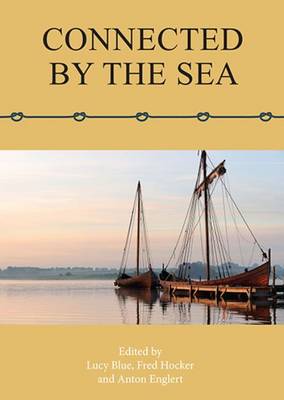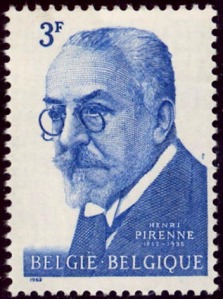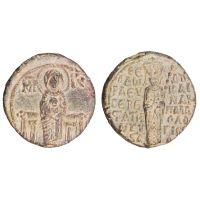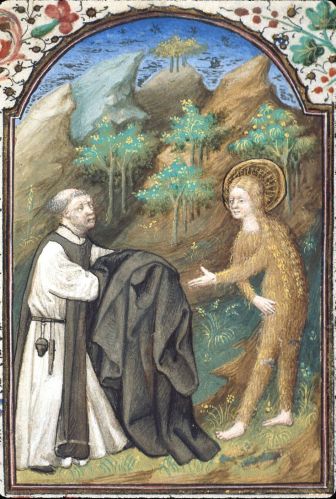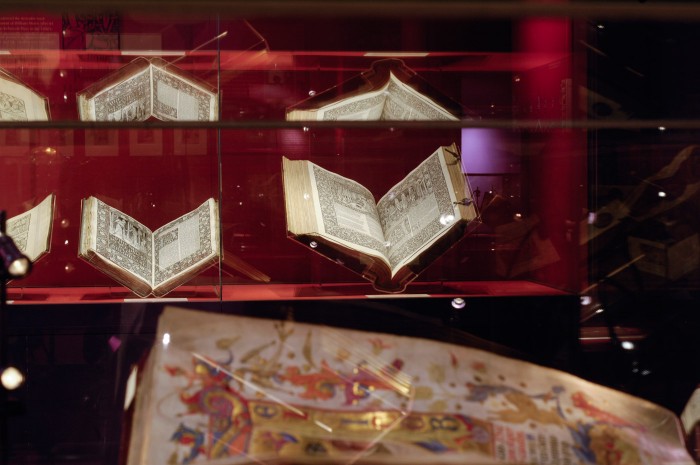Staying where it was relatively safe in mid-2017, the workshop I’ve just described was only the first of three days’ funded activity, which Dr Luca Zavagno and I had scheduled to allow him to do everything we’d been given money for him to do in the UK in a single trip. Whereas the previous day’s work had been on my Frontiers project, we now turned to Luca’s one, The World of Byzantine Islands. Here we’d planned two things in Leeds, the first being a kind of consultation workshop with the most obviously interested medievalists on Leeds’s staff, and the second being a graduate seminar the day after. Actually, in retrospect, I think we might better have planned to do these the other way round, as the way the latter worked was that Luca effectively presented his project in a twenty-minute paper and then invited discussion, whereas in the former the presentation was much quicker, as for peers; I think that in theory he’d have got better discussion for the staff having had the extra day to think about his project having seen the fuller presentation. However, I say only in theory, because actually we got very little take-up for the graduate seminar – my own fault for late publicity as much as anything – and so it became an extension of the already-active discussion from the previous day. So maybe it all went as well as it could have done. Anyway, to write about it now probably means reprising Luca’s project brief, and then picking up on the same kind of points of interest as I did in the previous Frontiers post. There is inevitably some overlap, because several of the same people were involved and thinking with what they’d done the previous day, but I don’t think that was a bad thing either…
So, Luca has of course written about his own project and you can see the brief for it here. Plus which, we have subsequently published on it, together even, and you could also read that.1 Because of all that I’ll be ultra-short here. Basically, Luca is contending with an established historiography that sees the islands of the Mediterranean as a frontier zone of the Byzantine Empire, and that largely in the sense of a defensive bulwark, peripheral, cut off and generally hostile, both to outsiders to the empire and, sometimes, to outsiders from within the empire.2 Luca, whose research in this area started on Cyprus and has now spread, is however aware of an increasingly busy amount of archaeology which suggests that most of the Mediterranean islands remained quite vibrant, both in terms of their connection with the wider empire and of their own ecologies, economies and political self-determination within the imperial sphere.3 Where this leaves Luca is arguing that the islands, and particularly Cyprus, Sicily, Sardinia and the Balearics, maybe also Crete and Malta, all of which were Byzantine long after the land-ward coastlines that would be lost to Islam had been, were not an edge or somehow a central part of a landward territory but a kind of third space, whose characteristics he is now trying to define.4

View of the Mediterranean from the part-Byzantine Castell de Santueri (not this part, I suspect), in Felanitx, Mallorca, once a seat of Byzantine island government; image from Mallorca Tourist Guide, no copyright stated
So in the first of these workshops, as I say, Luca gave us less of this than he would in the graduate seminar the next day, I think because he didn’t want to exclude any approaches. As a result, he found himself in the midst of a kind of all-comers ideas tennis, in which the other players, apart from myself, were my colleagues Dr Alan Murray, who had been in on the previous day’s session too and who knew Luca independently, and Professor Emilia Jamroziak, then-Director of the Institute for Medieval Studies at Leeds, as well as Dr Rebecca Darley of Birkbeck, University of London, who is an affiliate of the IMS but was also the third partner in Luca’s project. (Alan and Rebecca also came along to the graduate seminar the next day, but I’m going to concentrate here on the workshop, because it’s there that, going back over my notes, I can see the roots of a lot of things the project ended up generating, and it thus helps to explain a bit what it is that we academics actually get out of the travelling to talk to each other that we’ve largely had to give up this year. I’m not sure if we could have got the same results though video-conferencing, I will admit…)
So. Because Luca had left relatively little defined, we spent the first part of the discussion trying to establish what made good parameters for the project. The high medievalists wanted to know what it was about Luca’s 7th- to 9th-century timeframe that made sense, which is of course the Byzantine-Islamic transition in the islands; but that meant working out what that transition was for the islands and when it happened to them. Even the conquest dates of some of them are not very clear, but there were arguably bigger, slower changes afoot anyway. Rebecca, for example, argued (following Chris Wickham) that the critical change in the government of the Mediterranean in late Antiquity was not that of Islam but of the Vandal capture of North Africa in the early 5th century and the Persian one of Egypt in the very early 7th, both of which broke tax spines that maintained Roman capitals (Rome and Constantinople respectively) and ended the Roman mare nostrum.5 Luca pointed out that the islands didn’t necessarily fall out of imperial orbits when the coastlines did, not least because of their role as naval bases, which tended to maintain other features of control too.6 Nonetheless, we coalesced around the idea that cultural change might have been happening at different times and in different directions from place to place, or even the same things happening for different reasons, such as settlement moving off the coasts, which could be either because fewer people were coming to these places across the sea, making trade less viable a living and port cities less useful (as may have happened in Malta) or contrarily because more people were coming by sea and they were dangerous (as is supposed to have happened in the Balearics—but see my subsequent article on that…).7

The citadel of Mdina, Malta, another erstwhile site of Byzantine island government, image by 5-five-5, copyright not stated, linked through
With the idea of variation sort of established, I tried to apply that favourite intellectual jemmy of mine, scale, to try and group the variations and thus be able still to say something general about the change.8 It seemed to me that not all the Mediterranean islands could have had the same range of options in the period: some were too small to defend themselves, and some too big to be closed off from seaward access. I still think this is important, but in fact in the subsequent publication, it was Rebecca who really took this point and made it useful, whereas I kind of dropped it, so I’m not sure how much credit I can take.9 Still, it is interesting to review the notes and see the sharing of ideas that generated those papers which became articles; as I say, it maybe justifies the whole endeavour…
Perhaps the most interesting idea, though, at least for me, came from none of the project partners but from Professor Jamroziak, who rightly said that none of the categories by which we seemed to want to define ‘islands’ managed to include all Luca’s test cases terribly well and that we seemed to need a new definition or category. If not, he might have to deal with the possibility that things which were not, geographically, islands, still shared all the important characteristics of them. This really sparked thoughts for me, as I started coming with Byzantine landward fringe settlements that might fit. I should have thought of the various city-states down the Adriatic coast, like Ragusa or Dubrovnik, which was still basically an independent town in the tenth century as Emperor Constantine VII records, but what I actually thought of was Byzantium’s Crimean outpost at Cherson and the Islamic military colony at la Garde-Freinet, near modern Saint-Tropez.10 And you can see that this sank deep from what I ended up writing for the project.11 I don’t think I really gave Emilia the credit she was due for that thought in that piece, though; so, belatedly, I do so now. She started that hare, and my thanks to her!

Old city of Dubrovnik, Croatia, site of Byzantine coastal government but for a long time linked to Byzantium only by sea; ‘island’? Image by Diego Delso, licensed under CC BY-SA 3.0, Wikimedia Commons
By the end of this workshop, then, we’d all more or less prevailed upon Luca to develop a more variegated model of change in his study area, to reconsider his chronological scope and to rethink his optimistic view of connectivity as always being sufficient to have much effect on society or, if it did, always being positive. This last argument was still going on in the publication, indeed, but the use of the workshop was pretty clear and when Luca’s book on all this emerges you’ll be able to see where we were any help!12 This was not by any means what we spent most of that grant money on—in fact, we weren’t even able to spend all we’d got and had to give some back—but if I’ve shown you how it might have been usefully spent even so, then my purpose here is achieved, for today anyway…
1. Luca Zavagno, Rebecca Darley and Jonathan Jarrett, “Editorial” in Al-Masāq Vol. 31 (Abingdon 2019), pp. 129–139, DOI: 10.1080/09503110.2019.1596645.
2. Perhaps centred upon Elizabeth Malamut, Les îles de l’Empire byzantin, VIIIe‒XIIe siècles, Byzantina Sorbonensia 8 & 9 (Paris 1988), 2 vols.
3. For Luca’s work on Cyprus see Luca Zavagno, Cyprus between Late Antiquity and the Early Middle Ages (ca. 600-800): an island in transition, Birmingham Byzantine and Ottoman Studies 21 (London 2017).
4. See for an early take on these issues Luca Zavagno, “‘Islands in the stream’: toward a new history of the large islands of the Byzantine Mediterranean in the early Middle Ages ca. 600 – ca. 800” in Mediterranean Historical Review Vol. 33 (Abingdon 2018), pp. 149–177, DOI: 10.1080/09518967.2018.1535393; now see Zavagno, “‘No Island is an Island’: The Byzantine Mediterranean in the Early Middle Ages (600s-850s)”, The Legends Journal of European History Studies, Supplement 1 (Tokat 2020), pp. 57-80, DOI: 10.29228/legends.44375, and between the two one can set Zavagno, “‘Going to the Extremes’: The Balearics and Cyprus in the Early Medieval Byzantine Insular System” in al-Masāq Vol. 31 (Abingdon 2019), pp. 140–157, DOI: 10.1080/09503110.2019.1602375.
5. Based on Chris Wickham, ‘The Other Transition: from the Ancient World to Feudalism’ in Past & Present no. 103 (Oxford 1984), pp. 3–36, DOI: 10.1093/past/103.1.3, revised in Wickham, Land and Power: studies in Italian and European social history, 400–1200 (London 1994), pp. 7–42.
6. On the navy in the period see most obviously Salvatore Cosentino, “Constans II and the Byzantine navy” in Byzantinische Zeitschrift Vol. 100 (Berlin 2008), pp. 577-603, DOI: 10.1515/BYZS.2008.577.
7. Jonathan Jarrett, “Nests of Pirates? ‘Islandness’ in the Balearic Islands and la-Garde-Freinet” in Al-Masāq Vol. 31 (Abingdon 2019), pp. 196–222, DOI: 10.1080/09503110.2019.1600101 at pp. 199-204 for the Balearics and pp. 218-220 for Malta, largely based on Nathaniel Cutajar, Core & Periphery: Mdina and Ħal Safi in the 9th and 10th Centuries, ed. Godwin Vella, Medieval Malta 1 (Valletta 2018), for my copy of which I must thank the author.
8. My tools here come from Julio Escalona, “The Early Middle Ages: A Scale-Based Approach” in Julio Escalona and Andrew Reynolds (edd.), Scale and Scale Change in the Early Middle Ages, The Medieval Countryside 6 (Turnhout 2011), pp. 9–30, DOI: 10.1484/M.TMC-EB.3.4766.
9. See Rebecca Darley, “The Island Frontier: Socotra, Sri Lanka and the Shape of Commerce in the Late Antique Western Indian Ocean” in Al-Masāq Vol. 31 (Abingdon 2019), pp. 223–241, DOI: 10.1080/09503110.2019.1604930 at pp. 239-241.
10. Constantine Porphyrogenitus, De Administrando Imperii, ed. Gyula Moravcsik & transl. Romilly J. H. Jenkins, rev. edn., Dumbarton Oaks Texts 1 (Washington DC 1967; reprinted 1993 and 2008), cap. 29 (pp. 122-139) covers the various cities of the Dalmatian coast, including Ragusa, and for what it’s worth cap. 53 (pp. 259-287) gives an extensive and mostly legendary account of Cherson.
11. Jarrett, “‘Nests of Pirates’?”, pp. 212-218.
12. It should be coming out pretty soon as Luca Zavagno, The Byzantine Insular World: beyond the periphery (Amsterdam forthcoming).
53.857561
-1.924662
